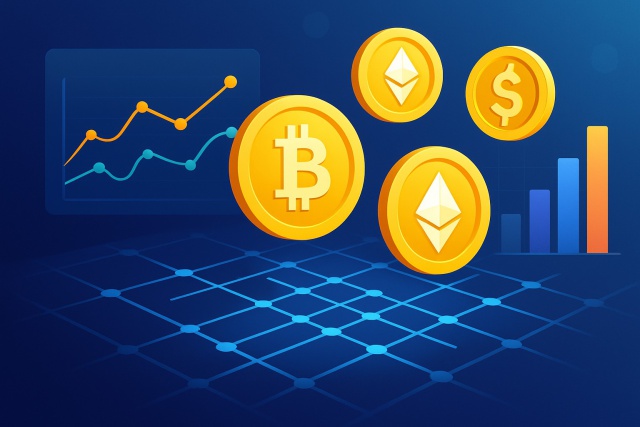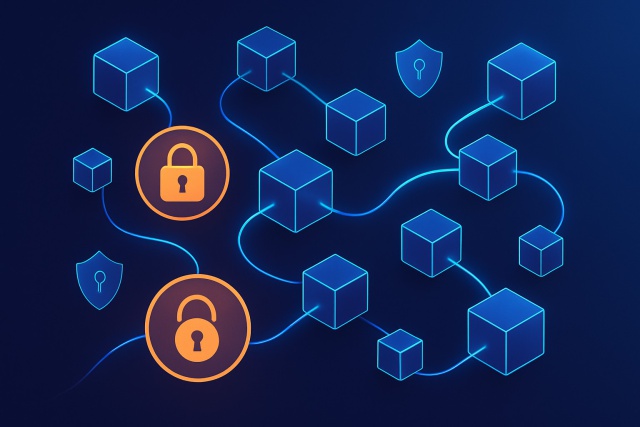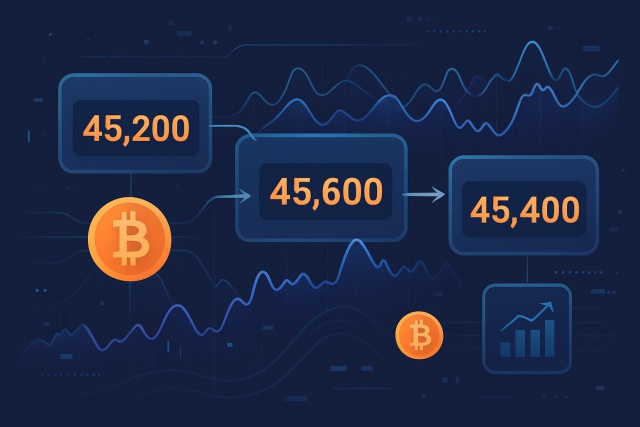Stablecoins vs Bitcoin - Risk Comparison

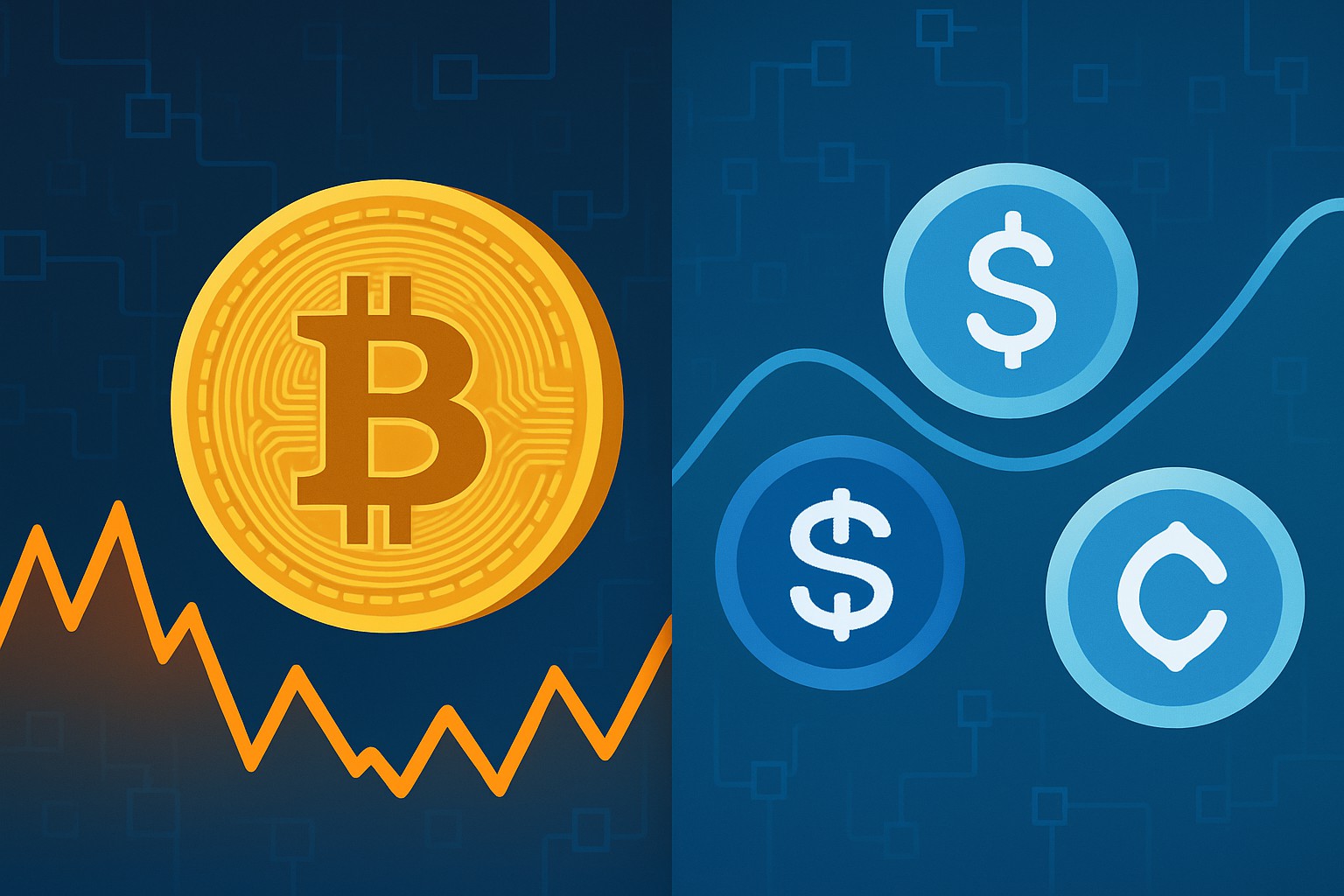
It’s important for investors, traders and enthusiasts to grasp the risks tied to stablecoins and Bitcoin in the ever-shifting landscape of crypto.
Bitcoin is the original cryptocurrency that started it all. It is a decentralized digital asset running on a blockchain network without a central authority. It is mainly seen as a store of value and a hotspot for speculative investment. Stablecoins are cryptocurrencies designed to keep their value steady by pegging to fiat currencies or other assets. They act as a bridge connecting the traditional financial world with the sometimes wild ride of crypto. Both play key roles. Bitcoin often steps in as "digital gold" while stablecoins handle everyday transactions, provide liquidity, and help manage risk in the bustling crypto economy.
Market Overview of Stablecoins and Bitcoin
Let’s take a closer look at the bustling world of stablecoins and Bitcoin two giants that keep shaking up the crypto landscape. Whether you are a seasoned trader or just crypto-curious, understanding their market dynamics is like having a front-row seat to the financial fireworks. Buckle up, because this overview aims to break down the essentials without drowning you in jargon.
Bitcoin still wears the crown as the largest cryptocurrency by market capitalization, buoyed by widespread adoption and solid liquidity that many find reassuring. Meanwhile, stablecoins like USDT and USDC have been expanding quickly thanks to their roles in payments and decentralized finance (DeFi). They also serve as a somewhat steady refuge when crypto markets throw a tantrum.
| Metric | Bitcoin | Stablecoins |
|---|---|---|
| Market Capitalization | Sitting at around $500 billion as of 2024, give or take some fluctuations | Roughly $180 billion combined, if you add them all up |
| Issuance Type | Decentralized and earned through good old Proof-of-Work mining | Fiat-backed (think USDT, USDC) and algorithmic varieties like DAI, each playing their part |
| Typical Transaction Volume | Clocking in at over 250,000 on-chain every single day | Racking up millions of transactions daily across a bunch of different blockchains |
| Primary Use Cases | Mostly seen as a store of value, a long-term investment, and a go-to for remittances | Commonly used for payments, hedging bets, and stirring liquidity in the DeFi world |
| Liquidity | Extremely high across global exchanges, pretty much ready when you are | Generally holds steady on crypto and DeFi platforms, keeping things flowing |
Round 1 Taking a Closer Look at Price Stability and the Perils of Volatility
Bitcoin's price has a reputation for being a rollercoaster and often swings by more than 10% in just one day as market sentiment and speculative demand influence it. Stablecoins on the flip side are created to keep things steady and are usually pegged 1 to 1 with the US dollar or other assets.
- Bitcoin’s wild swings often stem from speculative trading, breaking news that shakes the market, shifts in regulations and the ebb and flow of the broader economy.
- Stablecoins keep their pegs mostly by relying on fiat reserves, smart contract algorithms or backing from other cryptocurrencies.
- When stablecoins lose their peg it’s usually because reserves have run dangerously low, liquidity disappears or the underlying algorithm hiccups.
- Bitcoin’s price rollercoaster can deliver impressive gains but also carries a hefty risk for anyone holding on.
- Thanks to their relative calm stablecoins have become the go-to for those needing short-term cash-like assets within their crypto portfolios.
Round 2 Navigating the Risks Tied to Counterparties and Custodians
Bitcoin users can hold and transfer their assets on their own without middlemen. This delivers on the promise of decentralization and lets people keep full control over their funds. On the flip side, stablecoins especially those pegged to fiat currencies depend on centralized issuers and custodians who safeguard the reserves.
- Fiat-backed stablecoins rely on the trustworthiness of their issuers to maintain enough reserves, which is no small request.
- There is always a risk that things could go wrong if issuers mishandle funds or decide to shut down.
- Holding Bitcoin yourself means you don’t have to trust anyone else but it requires some security knowledge to keep your stash safe.
- Centralized stablecoins face challenges because they can get caught up in regulatory actions like asset freezes or seizures.
- On the bright side, Bitcoin’s blockchain security generally keeps transactions resistant to censorship and almost immune to tampering. I have come to appreciate this more over time.
Round 3 Taking a Closer Look at Regulatory and Legal Risks
Regulators have been tuning in more carefully to stablecoins lately mainly because of the risks these digital dollars could introduce to traditional finance and monetary policy. Bitcoin meanwhile dances to its own regulatory tune facing shifting uncertainties but generally enjoys broader legal acceptance as a decentralized asset with very few levers of control.
- Stablecoins are under increasing pressure to keep their reserves crystal clear and stick to AML and KYC rules like glue.
- Bitcoin exchanges are grappling with tougher enforcement measures, although the asset itself still holds its legal ground in most corners of the world.
- Legal action targeting stablecoins could throw a wrench in their peg and mess with their liquidity, causing a bit of a headache.
- Bitcoin's pseudonymous nature throws up regulatory puzzles, yet it also offers a bit of a safety net against being directly controlled.
- Regulatory frameworks are still very much a work in progress, creating a fair share of uncertainty swirling around in both markets.
Round 4 The Nitty-Gritty of Technology and Security Risks
Bitcoin’s blockchain stands tall on the twin pillars of strong decentralization and a hefty amount of network hashing power, making any attack not just costly but a fool’s errand. On the flip side, stablecoins rely on smart contracts and issuance processes that can sometimes trip over coding glitches or oracle slip-ups or require liquidity provider bailouts.
- Bitcoin’s network security leans heavily on a massive amount of mining power and a broad network of nodes scattered far and wide.
- A 51% attack on Bitcoin is technically within the realm of possibility, but it usually ends up being a money pit no one wants to dive into.
- Stablecoins come with their own set of headaches, especially when pesky bugs in smart contracts open doors for crafty exploitation.
- Those oracles that feed price data to algorithmic stablecoins are not exactly Fort Knox and can sometimes be a soft target for manipulation.
- Liquidity providers backing stablecoins might just throw in the towel and default, throwing a wrench in peg stability and redemption along the way.
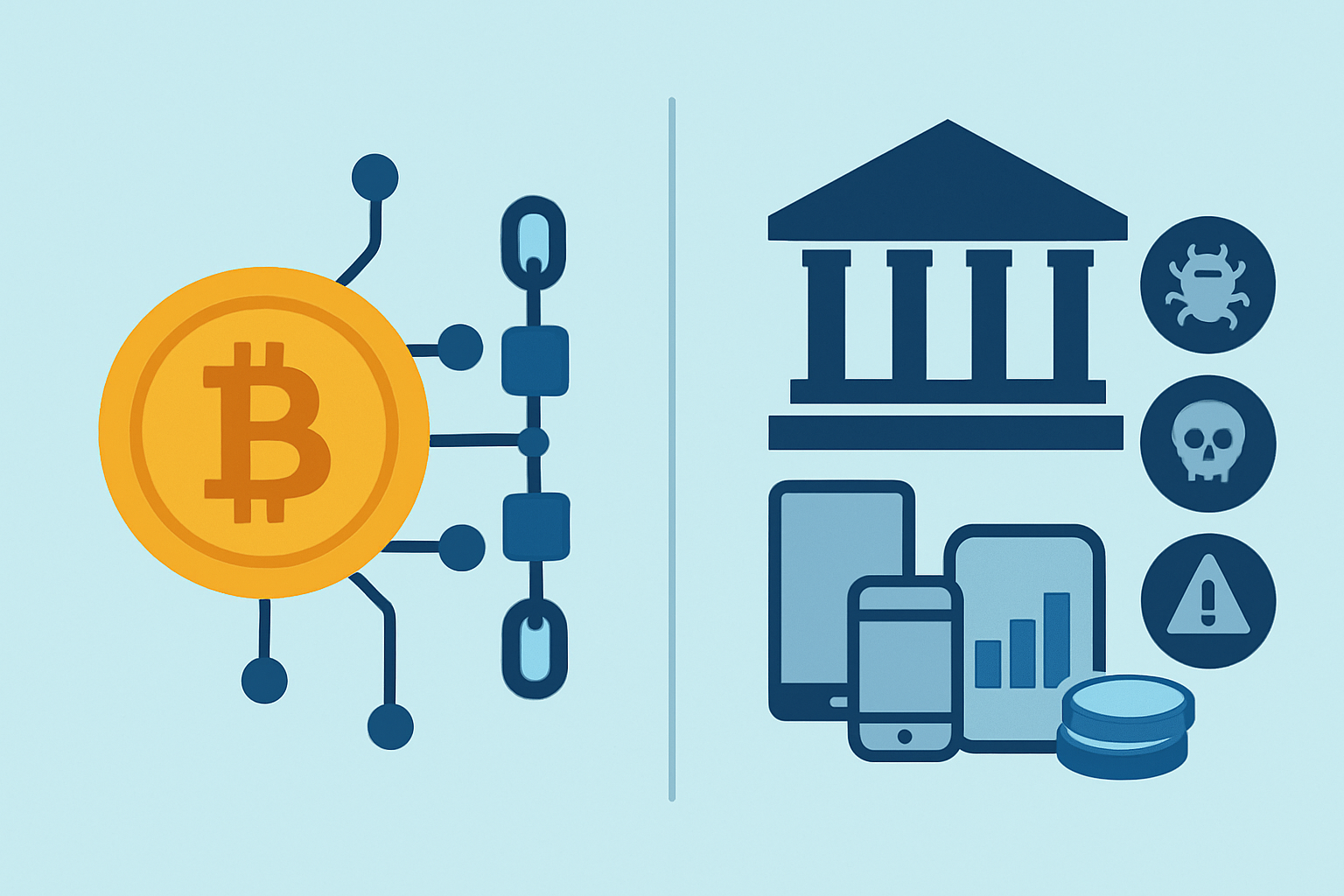
Round 5 Navigating the Bumps in Market and Adoption
Bitcoin's solid network effects and its well-earned nickname as digital gold help cement its spot in the market. Meanwhile, stablecoins often find themselves navigating choppy waters because fresh variations pop up all the time.
- Bitcoin enjoys the backing of the largest and most dedicated user base, individuals who stick around for the long haul and believe in its steady growth.
- Stablecoins often have to prove their peg stability repeatedly as algorithmic alternatives appear more frequently.
- When fiat currencies wobble, the trust investors place in fiat-backed stablecoins can take a hit.
- Mergers and regulatory crackdowns on certain stablecoins can splinter liquidity and leave the market patchy.
- Bitcoin's reputation as a solid store of value helps keep investor confidence steady even when markets throw a curveball.
A Side-By-Side Look at the Comparative Risks
| Risk Factor | Stablecoins | Bitcoin |
|---|---|---|
| Price Volatility | Really low, since they’re designed to keep value steady as a rock | Known for its wild rollercoaster-like price swings, making it a thrill ride |
| Counterparty Risk | Pretty high for fiat-backed coins because you’re trusting those issuers with your money | Minimal, especially if you’re the one holding your keys tight |
| Regulatory Risk | Quite high, thanks to plenty of regulatory eyeballs zeroing in on issuers | Moderate and still a moving target, but less in the regulatory spotlight |
| Technological Risk | Susceptible to bugs in smart contracts and oracle hiccups that keep developers on their toes | Built on a robust network that rarely sees 51 percent attacks — a real fortress |
| Market Adoption | A crowded arena, usually with ties to the stability of fiat currencies | Boasts strong network effects and has widespread, growing adoption |
| Liquidity | Generally easy to trade on DeFi platforms and exchanges, so you won’t be stuck waiting | Extremely liquid across global markets, ready for action |
| Custodial Risk | Can be a concern if centralized issuers hold the keys, so trust must be earned | Low risk as long as you’re careful with your own self-custody routines |
Making Sense of Stablecoins vs. Bitcoin When It Comes to Risk
Deciding between stablecoins and Bitcoin really comes down to your risk tolerance and what you hope to achieve with them. Stablecoins usually shine when you need low volatility and transactions that go off without a hitch. Bitcoin often wins over those who are in it for the long haul, ready to ride out the wild price swings and drawn to its solid decentralization.
- If you’re aiming to shield yourself from the wild swings of the market and want a reliable way to handle payments, stablecoins often come out on top.
- Bitcoin tends to suit those chasing potentially big returns and serves as a kind of digital gold, if you will.
- Stablecoins also play a handy role in hedging crypto portfolios and speeding up asset transfers, making life a little easier.
- Bitcoin remains a sturdy choice for holding value over the long haul, especially thanks to its powerful network effects that keep it ticking.
Useful Links
- CoinDesk - Your go-to spot for news and savvy analysis on cryptocurrency markets
- U.S. Securities and Exchange Commission - The official scoop on digital assets
- Bank for International Settlements - Deep dives and fresh insights from the Innovation Hub
- CoinMarketCap - Reliable data and research to keep you ahead in cryptocurrency markets
Start Your Crypto Journey with Coinbase Today
Ready to enter the cryptocurrency market but unsure where to begin? Coinbase makes buying, selling, and storing digital assets simple and secure for beginners and experts alike.




